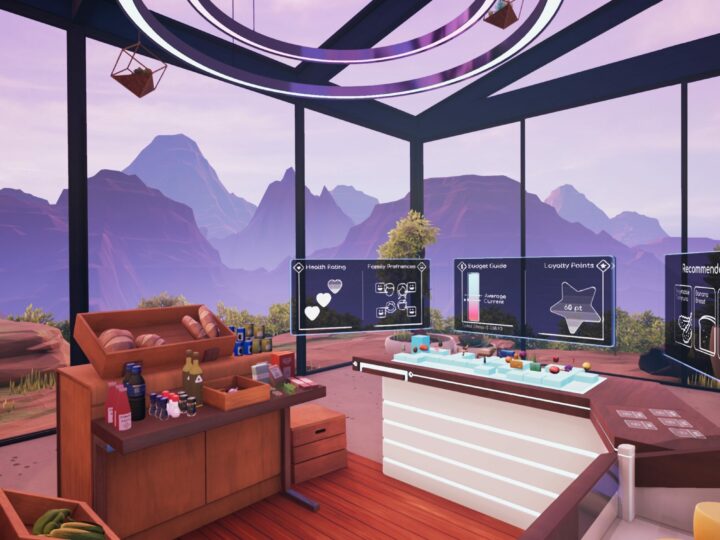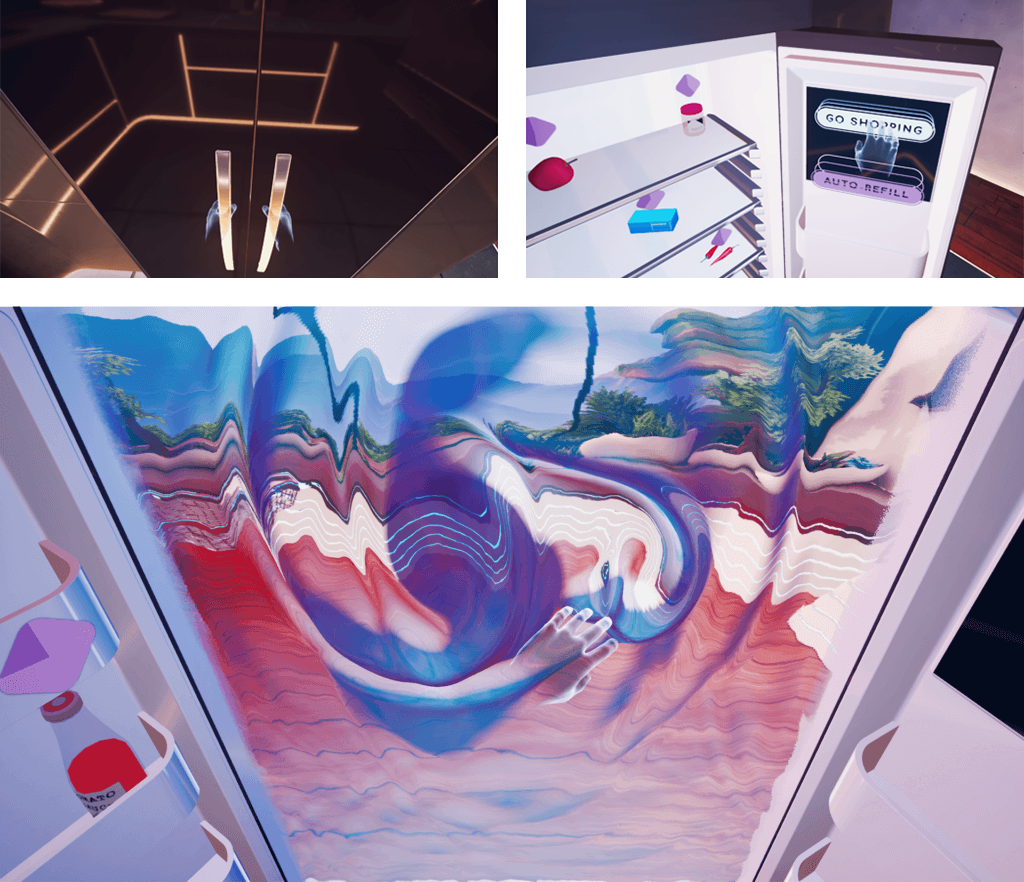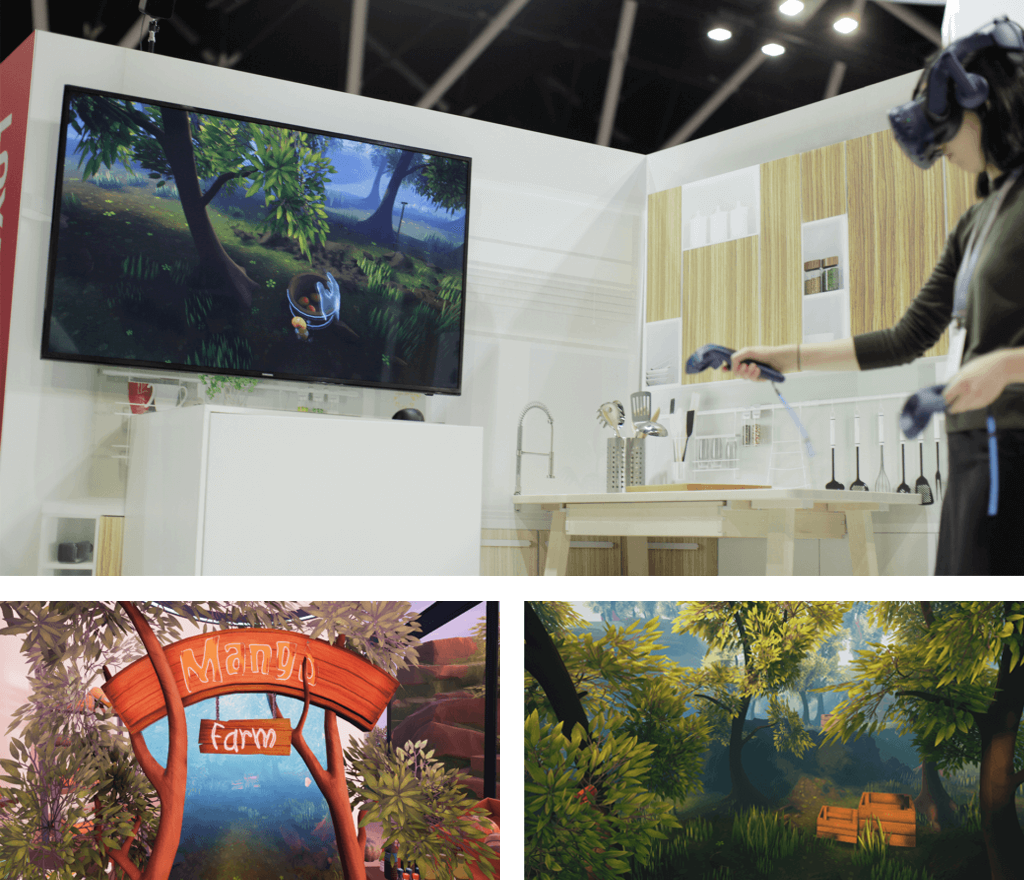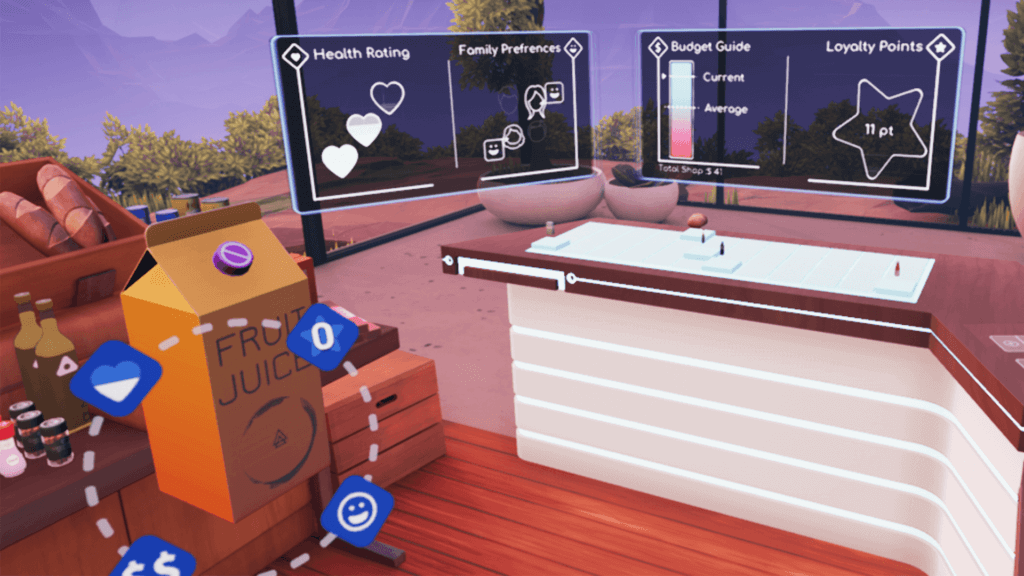Virtual reality creates a future that doesn’t exist

Have you ever stopped to consider how the emerging technologies of today might influence our lives tomorrow?
If you have, you’ve probably found the exercise both exciting and frustrating: while the endless possibilities may be thrilling, it can be hard to visualise things that don’t even exist yet.
Finding a solution to this dilemma (and experiencing it ourselves) was the task of our latest virtual reality project. The experience, appropriately titled Future of Retail, was designed to help audiences at the 2018 Adobe Symposium consider the future of virtual reality retail for small consumer goods like groceries. Step inside and discover just some of the ways that technologies like virtual reality and artificial intelligence might enhance and extend the retail experience.

Future of Retail
Virtual reality explores the future of retail in a technology-driven world.
A futuristic apartment
What does the apartment of the future look like? We wanted our future apartment to be a space that audiences felt instantly comfortable in. As soon as they entered, audiences needed to believe might be an apartment in some not-too-distant future.
The result is a small, bright apartment that gave modern architectural stylings a futuristic twist. Slanted ceilings, exposed brick and polished concrete all work to give the open-plan living space a modern, liveable feel. Then, simple touches such as strip lighting and projections give the space a feeling of authentic futurism.

Moving through virtual space
The question of how to direct audiences through a virtual space is one that plagues all creators of virtual reality. Within this experience, we tackled this challenge with the help of subtle barriers, cues and attractors. For example, when players enter the experience, their physical placement between the island bench and the fridge is key. By boxing audiences in, we’re able to reduce their desire to move through the space. Instead, we encourage them to interact with their more immediate surroundings.
What was perhaps more challenging in this particular experience was convincing audiences to move from the apartment to the supermarket. We may all dream of magical portals, but it turns out we’re not that comfortable when it comes to actually walking through them. To help things along, we tried to make this portal as interactive as possible. We figured that once players started playing with the hypnotic, moving waves they’d eventually feel compelled to try slipping through.

Supermarket in the sky
Once players step through the portal, they find themselves in a small, deli-like supermarket. Just like the apartment, this virtual store was designed to feel natural and intuitive, with just a hint of the future. Here, wooden produce boxes provide a familiar contrast to futuristic holographic screens. Meanwhile, white walls and steel beams provide a simple yet modern atmosphere.
What’s most striking about this shopping environment, however, are the large windows. Mainly because they look out onto such a vast, beautiful landscape. This is one of the wonderful things that virtual reality retail could offer: the chance to do our shopping in fantastical other worlds.


Meaningful promotions
This idea of creating and inhabiting other worlds brings us to yet another potential benefit of virtual reality retail: creating more immersive, meaningful advertising. In ‘Future of Retail’, we explored this idea through the Mango Farm – a virtual reality replica of where our real life produce comes from.
Taking the farmer profiles of today’s supermarket advertising to the next level, the Mango Farm encourages consumers to discover the story behind their food for themselves. Here, shoppers are given a memorable, exploratory experience while retailers tap into the powerful decision-making motivator of emotion.
Backed by the immersive and interactive power of virtual reality, the Mango Farm creates a memorable, informative experience for customers. Indeed, the power of this new kind of promotion comes in engaging audiences on a personal, emotional level. It gives shoppers something to explore and remember, a way to connect more consciously with their food.

Recommendations in real-time
Back in the virtual reality supermarket, the experience also explores how virtual reality could help integrate artificial intelligence systems into a physical environment.
It works something like this. Imagine picking up a physical piece of food or veg and instantly seeing all the data associated with it, tailored to your own personal preferences. I’m talking price, health rating, how happy it’ll make you and your family, and the amount of loyalty points you’ll earn through it’s purchase. Making the right decision has never been so easy.

Similarly, in the Recipe Recommendation system, the data you’ve given is combined with the actual items in your basket to provide a series of recipes. It’s no pipe dream either. Even in this demonstration, all the recommended recipes are developed in real time based on the actual ingredients you choose. A true prototype of the future.

Holographic interfaces
As you may have guessed, visualising all this data raised another design challenge. How could we create a futuristic yet believable user interface? This was a crucial problem to solve, as it sits at the very heart of the experience’s premise: that virtual reality can combine the benefits of traditional and online shopping into a single, more effective experience.
The goal was to create a complete, satisfying user journey that would allow shoppers to better understand how they could benefit from data and intelligence systems as they shop. To do this, we settled on a combination of simple projected icons and opaque holographic screens. These simple visual representations present a friendly, approachable user experience that integrates information into the physical landscape, making it easier to read and understand.

A future that doesn’t yet exist
Overall, we hope that the experience demonstrates virtual reality’s potential to one day enhance and extend the retail process. By bringing together the physicality of traditional retail and the convenience of online shopping, we think the experience shows how virtual reality could help shoppers and retailers alike take advantage of what the future has to offer.
‘Future of Retail’ debuted during the 2018 Adobe Symposium in Sydney. It was created in partnership with Adobe Australia and New Zealand. Designed for the HTC Vive Pro, the experience also couldn’t have been created without the kind help of HTC Vive. If you’d like to know more about the project, take a look at this blog post or the project’s Facebook Gallery.







